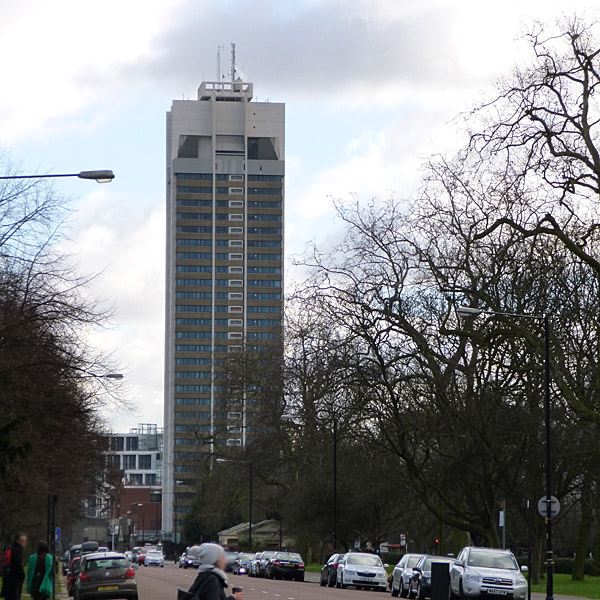The Hyde Park
Barracks have been on this site since the
middle of the 18th Century. The present
collection of buildings were designed by Sir.
Basil Spence, the architect of Coventry
Cathedral. The barracks are home to the
men and horses of the Household Cavalry.
The residential tower dominates the skyline
around Hyde Park standing 308 feet high and
providing 33 floors of accommodation.
The War Office approached the architect Sir.
Basil Spence to design the new barracks
complex to their specifications but from the
outset there was controversy around the height
of the residence tower. It appears that
the reason for the tower was to ensure that
there was ample room for a parade ground on
the restricted footprint of the site.
The depth of the controversy can be gathered
from the fact that, whilst the approach to
Spence happened in 1957, construction didn't
begin until 1967. In the end, despite
the objections of groups like the Greater
London Council the site of the barracks was on
the Crown Estate over which the GLC had no
legal authority.
So whilst many described the tower as an
eyesore that spoiled Hyde Park, Basil Spence
is quoted as saying, "I did not want this to be a
mimsy-pimsy building…It is for soldiers. On
horses. In armour."
*****************************************
An article in the Independent, dated June 10,
2012 indicated that:
"The Ministry of Defence has
confirmed plans to sell the Household
Cavalry Mounted Regiment (HCMR) barracks
in Hyde Park after more than 200 years,
and find a new home for them elsewhere
in the capital.
The Household Cavalry, which
comprises The Life Guards and The Blues
& Royals, have historically been
based less than a mile from Buckingham
Palace, for ceremonial duties and to be
on hand to deal with any emergencies
besetting the monarch.
Yet the MoD is now looking for
alternative homes for its mounted units
up to 2.5 miles away from nearby Horse
Guards Parade, where members of the
regiment take part in the Changing of
the Guard every day.
The 33-storey residential block at
the heart of the complex was once voted
one of the ugliest buildings in Britain.
But its position in one of London's most
expensive areas has made it a uniquely
saleable asset for a department
struggling to stay within tight
government spending limits."
|

